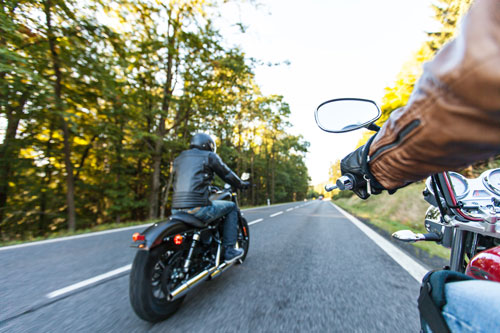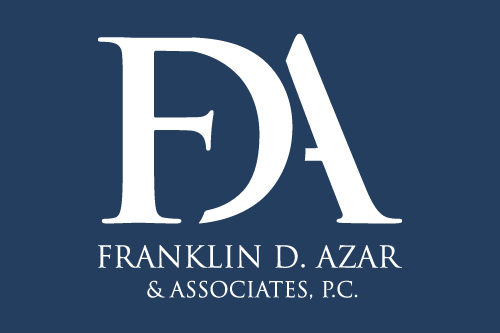Motorcyclists are inherently in a more vulnerable situation on the roadways than someone driving an SUV or a pickup truck. Their rides are less stable and offer little protection in the event of a crash. Yet even veteran riders may be surprised — and alarmed — by the crash data regarding their favorite mode of transportation.
According to the National Safety Council, motorcycles account for only three percent of all registered vehicles in the United States and only 0.6 percent of all vehicle miles traveled. Yet motorcyclists account for fourteen percent of all traffic deaths, more than 5000 deaths a year. Eighty percent of all reported motorcycle accidents result in injury or death; based on the fatality rate per 100,000 vehicles registered, motorcyclists are four times more likely to be killed in a crash than car drivers.
At least some of the deadly collisions can be attributed to reckless behavior on the part of motorcycle operators, including speeding and drinking; alcohol is involved in 40 percent of single-vehicle fatal crashes by motorcyclists, and speeding is a factor in a third of motorcycle fatal crashes. But more often than not, motorcycle crashes are caused by non-motorcycle drivers, who are driving impaired or distracted, following too close, speeding — or who simply fail to see or yield to an approaching motorcycle. Given the degree to which motorcyclists are at risk from others’ carelessness, it’s essential for motorcyclists to drive not just defensively but with a high degree of vigilance at all times. In the unfortunate event of a motorcycle accident caused by someone else’s negligence, seeking guidance from a motorcycle accident lawyer in Colorado is crucial to protect your rights and seek compensation for your injuries.
Here are tips for anticipating — and preventing — motorcycle crashes:
- Get road-worthy. The right protective gear, including long pants and sleeves, leathers or padded or insulated clothing, eye protection, and sturdy boots, can make a significant difference in many crash scenarios. Regular maintenance on tires and brakes and making sure signals and headlights are working also helps. And, regardless of your personal preferences or the helmet laws in your state, wearing a full-face helmet is one of the best investments you can make in self-preservation; the helmet-less are twice as likely to suffer traumatic brain injury in a crash.
- Get seen. Wearing bright colors and incorporating reflective materials in your clothing and your ride help to alert other drivers to your presence. Keep the headlight on, too, and don’t hesitate to use your horn if you think other drivers are oblivious. Most of all, try to stay out of others’ blind spots.
- Slow down. Reaction time is everything. Instead of testing your engine’s limits, give yourself the time and distance to respond to changing road and traffic conditions — debris or stopped vehicles, a blind turn, merging lanes, potholes, etc. Be flexible enough in your trip planning to incorporate some down time, in case you have to take a break because of inclement weather or some other surprise.
- Anticipate trouble at intersections. Half of all crashes happen at intersections. Motorcyclists are especially at risk, not just from oncoming traffic turning left in front of them but from drivers behind them who are not paying attention and could rear-end them. Check your rear-view mirror, come to a stop at the edge of the lane and flash your brake lights repeatedly. Keep in gear, and if it looks like you’re about to get hit, pull away to the shoulder if possible.
- Avoid lane-sharing and parked cars. Lane-splitting, the practice of riding a motorcycle between lanes of slow-moving or stalled traffic, is illegal in almost all states. But weaving incessantly around other vehicles, even if it’s permitted, can still be highly risky. Consider all the things that can happen if, say, you’re squeezing between active traffic and parked cars: a car could abruptly pull out in front of you, or a car door could open, or a pedestrian could step in front of you. Remember: space and distance are your friends.
- Adopt a safety-first attitude. Since motorcycles are at a disadvantage in any encounters with bigger, heavier vehicles, it makes sense to do what you can to improve the situation. Don’t drink and drive, signal your intentions before lane changes, make sure other drivers are aware that you’re there. The relationship between cars and motorcycles doesn’t have to be an antagonistic one, if safety-conscious drivers on both sides understand the importance of sharing the road.
THE MOTORCYCLE ACCIDENT LAWYERS AT FDAZAR
For more than thirty years the attorneys at Frank Azar Car & Truck Accident Lawyers have helped thousands of injured people obtain complete and timely compensation for their losses. Our proven track record and expertise have allowed us to grow into the largest personal-injury law firm in Colorado, with offices in Denver, Aurora, Thornton, Fort Collins, Greeley, Grand Junction, Colorado Springs, and Pueblo. If you’ve been injured in a motorcycle, car, truck, or bus accident, you may be entitled to compensation. Please call the motorcycle crash attorneys at FDAzar day or night at 800-716-9032 or contact us here for a free consultation and no-obligation evaluation of your case.



